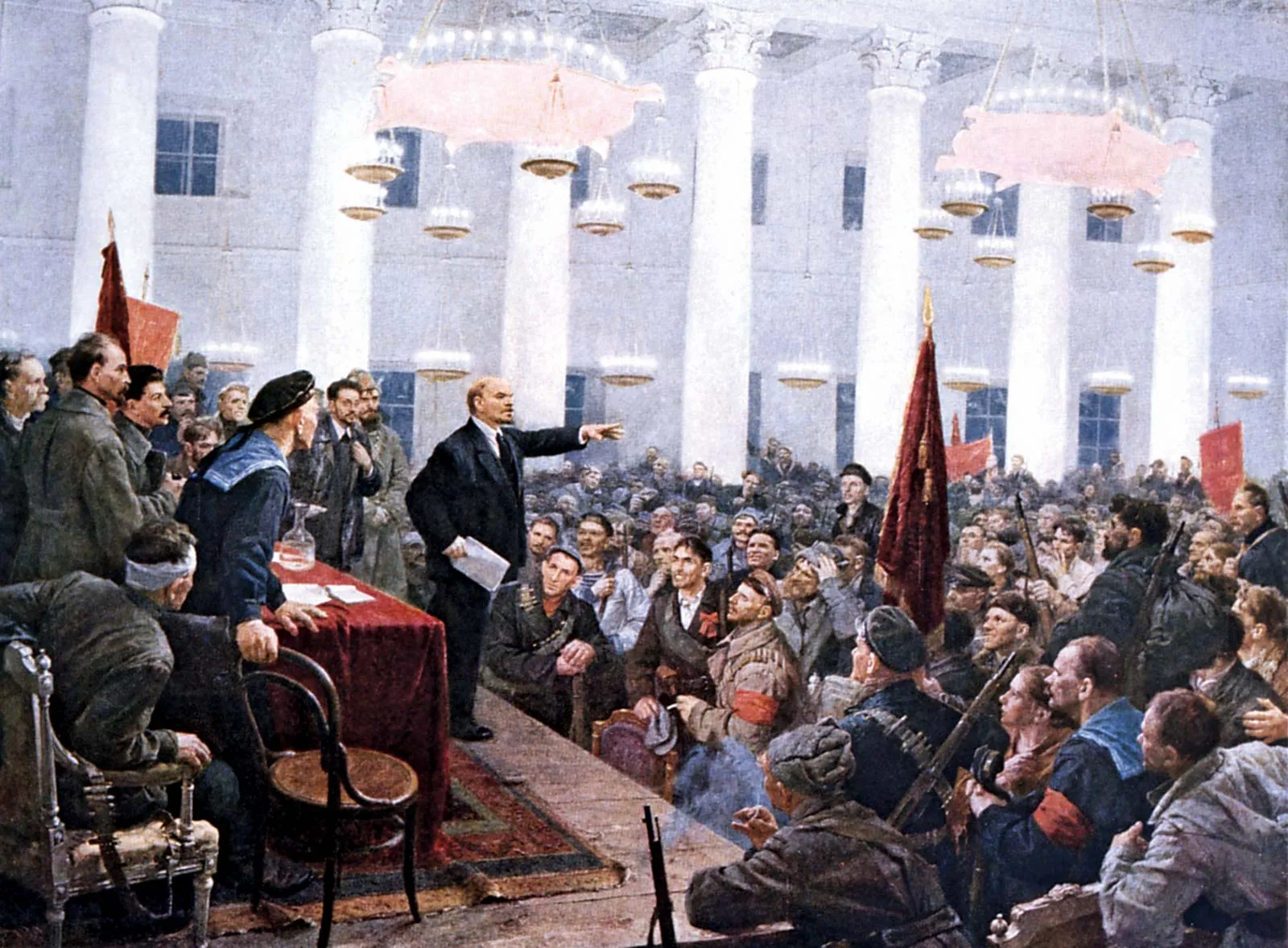
Structure of Bolshevik Government
Modern History (Year 12) - Bolsheviks in Power
Ben Whitten
Structure of Bolshevik Government
After the October Revolution of 1917, the Bolsheviks came to power and formed the Council of People's Commissars, also known as SOVNARKOM. At the Second Congress of All-Russian Soviets held on the 25th and 26th of October in Petrograd, several non-Bolshevik members left in protest of the Bolsheviks taking power for themselves. However, this ended up giving the Bolsheviks a clear path to establish their own government. Trotsky, addressing non-Bolsheviks at the congress, infamously stated that they were "miserable bankrupts" and their role was "played out" and that they should "go back to where [they] ought to go: into the dustbin of history."
With the Bolsheviks being the leading socialist party in Russia, Lenin was appointed as Chairman, Trotsky as Commissar of Foreign Affairs and later Commissar of War and Stalin as Commissar of Nationalities. Other portfolios in SOVNARKOM included Commissar of Internal Affairs, Commissar of Popular Enlightenment and Commissar of Social Welfare. The group of revolutionary leaders now had to focus on consolidating their power.
Obstacles to the Consolidation of Power
The Bolsheviks had established the structures for governing Russia, but maintaining control would prove to be a significant challenge. Despite the success of the revolution, the country's issues such as a failing economy, food shortages, anarchy in the countryside, and ongoing World War I could not be resolved immediately.
Additionally, the Bolsheviks faced difficulty in gaining support from the population. Civil servants and the state bank refused to cooperate with the party, limiting the ability of SOVNARKOM to effectively administer the government. Furthermore, the Bolsheviks were lacking in many key aspects of a strong governing body, such as a well-equipped army, law enforcement agencies, support from all Russian Soviets and complete control over the entire country. All of these factors made their task as leaders of Russia extremely difficult.
Early Decrees of the Bolshevik Party
In this situation, the only way that the Bolsheviks were going to get anything done would be to rule by decree. This meant passing a series of laws that would take effect immediately and not need to be debated or approved by another political body.
Land Decree
Recognising the seriousness of Russia’s land issue, the Bolsheviks allowed peasants to seize land from wealthy landowners without payment. This went against Bolshevik ideology because no one was meant to own land privately (not even downtrodden peasants) in a socialist society. But the Bolsheviks knew that to secure their power, they needed the peasants on side!
Peace Decree
Russia’s involvement in WWI was the nail in the coffin of the Tsar and the Provisional Government. The Bolsheviks knew that their survival depended on getting Russia out of the war. Pronto! This decree called for immediate negotiations to end Russia’s involvement in WWI and also encouraged soldiers to stop obeying military generals.
Workers’ Reforms
As far as the Bolsheviks were concerned, the workers lay at the heart of the revolution. Several measures were introduced to improve the lives of workers, including unemployment benefits, pensions and sick pay, as well as an eight-hour workday and worker control of factories and railways.
Religious Reforms
Karl Marx believed religion to be “the opiate of the masses”, meaning it gave temporary relief to the suffering proletariat but blinded them to real revolution. The Bolsheviks set about dissolving the power of the Russian Orthodox Church, confiscating land and officially separating church and state in 1918.
Social Reforms
Many Bolshevik social reforms targeted equality between men and women. The 1918 Marriage Code made women legally equal to their husbands and made divorce a lot easier. The Zhenotdel, or Department of Women’s Affairs, gave Russian women more opportunities than ever before. Abortion was even legalised in 1920!
Military Reforms
The Bolsheviks reworked the whole military structure to give more power to soldiers and less power to greedy generals. Officers had to be elected and would be controlled by army soviets.